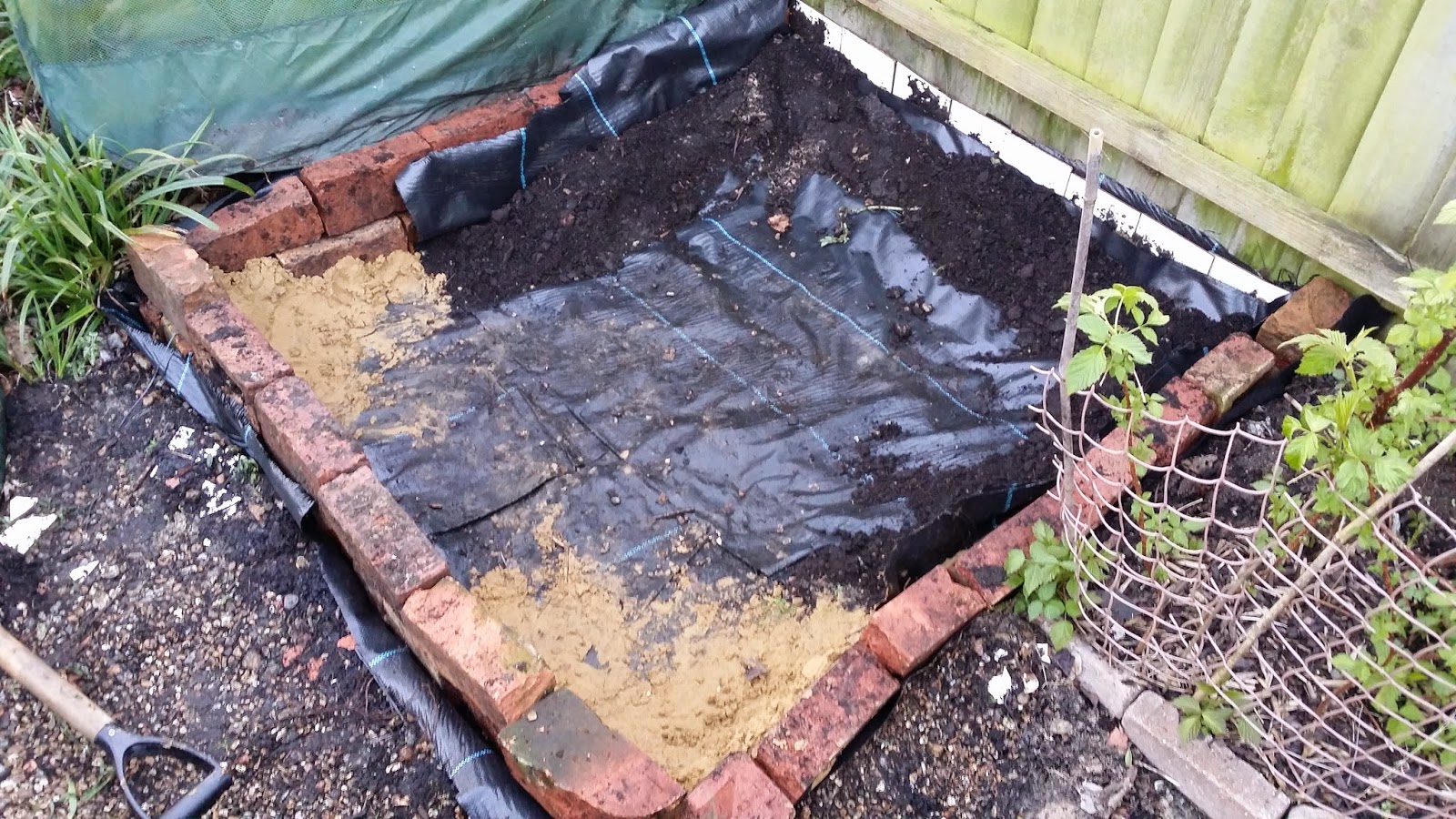I also learned that it was well nigh impossible to "encourage" them away in a back garden environment. Home-made remedies like garlic or chilli infusion sprays were completely ineffective, commercial pest killers or repellents were completely ineffective and awful for the environment, and companion plants achieved fuck all, while taking up space not doing anything.
The only answer appears to be physically walling away the plants with netting to stop the pests from getting in and, as I've mentioned before, netting and I do not get along, mostly because netting is waiting until I let my guard down so it can try to break my neck again. So I've had to invest in a series of specialist pop-up Brassica Cages in order to survive my own garden.
Now, overall, the cages have been phenomenal. They spring open like a pop-up tent and keep their shape perfectly, without the need for my usual wonderful constructions of bamboo, netting, wire and hope.
For those who didn't missed the tale of the vegetable orphanage the first time around, I'll spoil the ending for you - it was less than perfectly successful.
Plus, they have zipped doors, which means that I can't pull my usual trick of perfectly securing insect protection around a plant before realising that I need to get to something underneath it.
There are only two major down-sides to them. The first is that they struggle in high winds, which, being on top of a hill, we have a *lot*. They have to tied down 15 ways from Sunday and require so many stakes for support that I'm actually giving serious consideration to growing a bamboo plant, just so I don't have to keep handing over money to the garden centre.
This arrangement fell apart, two days after this photo was taken, in a light breeze. Because I built it.
The other downside is that they cost a bomb. I justified it to myself originally on the basis that I grew all my brassica and leafy things in four beds that were exactly the same size. So while buying four nets would cost a lot of money, it was an investment and I would never have to buy any more, unless of course I decided to strip out all of my strawberries and take the opportunity to rotate some of the brassica away from the 1.25m2 beds to let the soil recover. And what are the odds of me deciding to do that?
Pretty high, as it turns out. You'd think I'd remember I was a phenomenal idiot, wouldn't you?
So, I was left with a 1.25m2 brassica cage to fit on a 1m x 2m vegetable bed. "Shouldn't be a problem!" I thought. "I'll just split the vegetable bed in half and make it into two 1x1m beds and then the cage can cover one of those. 1m is less than 1.25m, so it'll be fine!"
So far, so hoopy, until I came to actually trying to accomplish this and realised that the whole point of the cage is that it fits snugly without gaps, so that no butterflies can get in. This includes at the bottom, because butterflies are tenacious little buggers and aren't against going to ground level to get into somewhere. It also turns out that 25cm is quite a big gap to make just disappear.
Still, I went to my task with abandon and proceeded to try and make a quart pot fit snugly around a pint, using only heaps of gardening wire, ground staples, imagination, hope and a lot of swear words.
Nailed it
The snapping noise as I tied part of the net to itself and forced it into position was all part of the plan. I'm sure it'll be fine - it's probably designed to taper down from full size at the top to 4/5th size at the bottom and the fact that one of the straight bits now hangs limply at right-angles is a feature, not a bug.
It's also completely self supporting, apart from the stakes on every corner and 15 bits of gardening wire attaching it to the chain link fence behind. I did try using only 14 ties to the fence, but it attempted to break free and go back to 1.25m2 wide instead of squeezed into just 1m. There used to be a nascent chard plant on the left hand side before that. Now it's tied to the fence in 15 places and I'm digging out the chard seeds again.
Notice also the pots down at the bottom - they're actually vital structural components. They're pinning the bottom of the net to the wooden frame of the bed and, in the case of the one on the left, it's pinning the net to itself to take up some of the slack. To demonstrate the complete success of my genius design, I thought I'd take some pictures from the side view:
Go home brassica cage, you're drunk.
Oh for f... Anyone got the number of the local taxi?!
In the interests of not having the next breath of wind contort my broccoli plants into an integral part of an Escher-esque abomination of nets, sprung wire, leaves and chain link, I have now decided to buy a new brassica cage of the correct size. Hopefully I haven't unalterably buggered my £44 cage in an effort to avoid spending £29.
In other news, check out our pear tree!
The dandelions are also a feature.
Quite apart from being very pretty, that is a significant amount more blossom than last year. I hope that this is the year we finally get edible pears. Sure, we did eat the ones that grew last year, but that was more out of a sense of duty than out of any belief that they were actually fit for human consumption.
PJW




















































